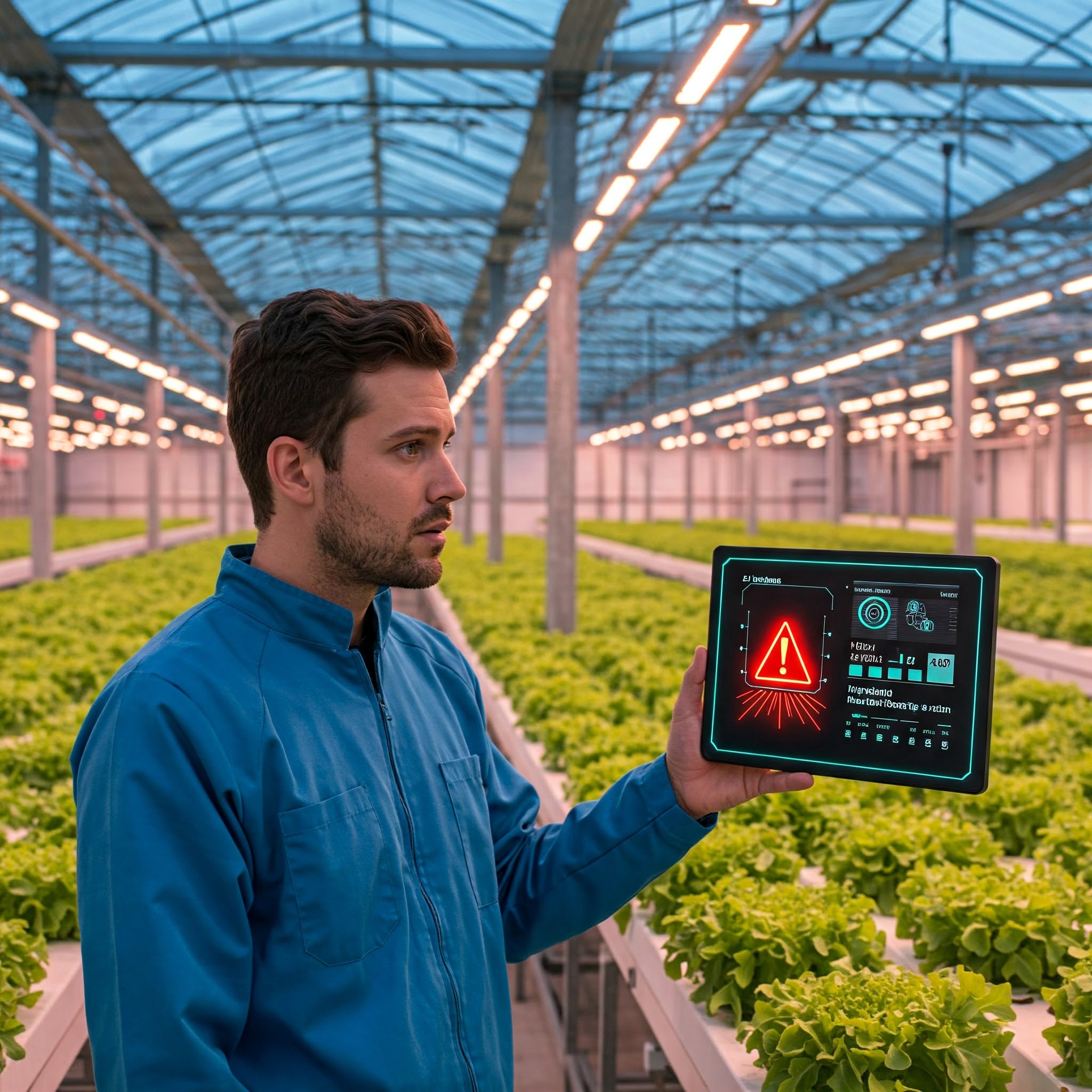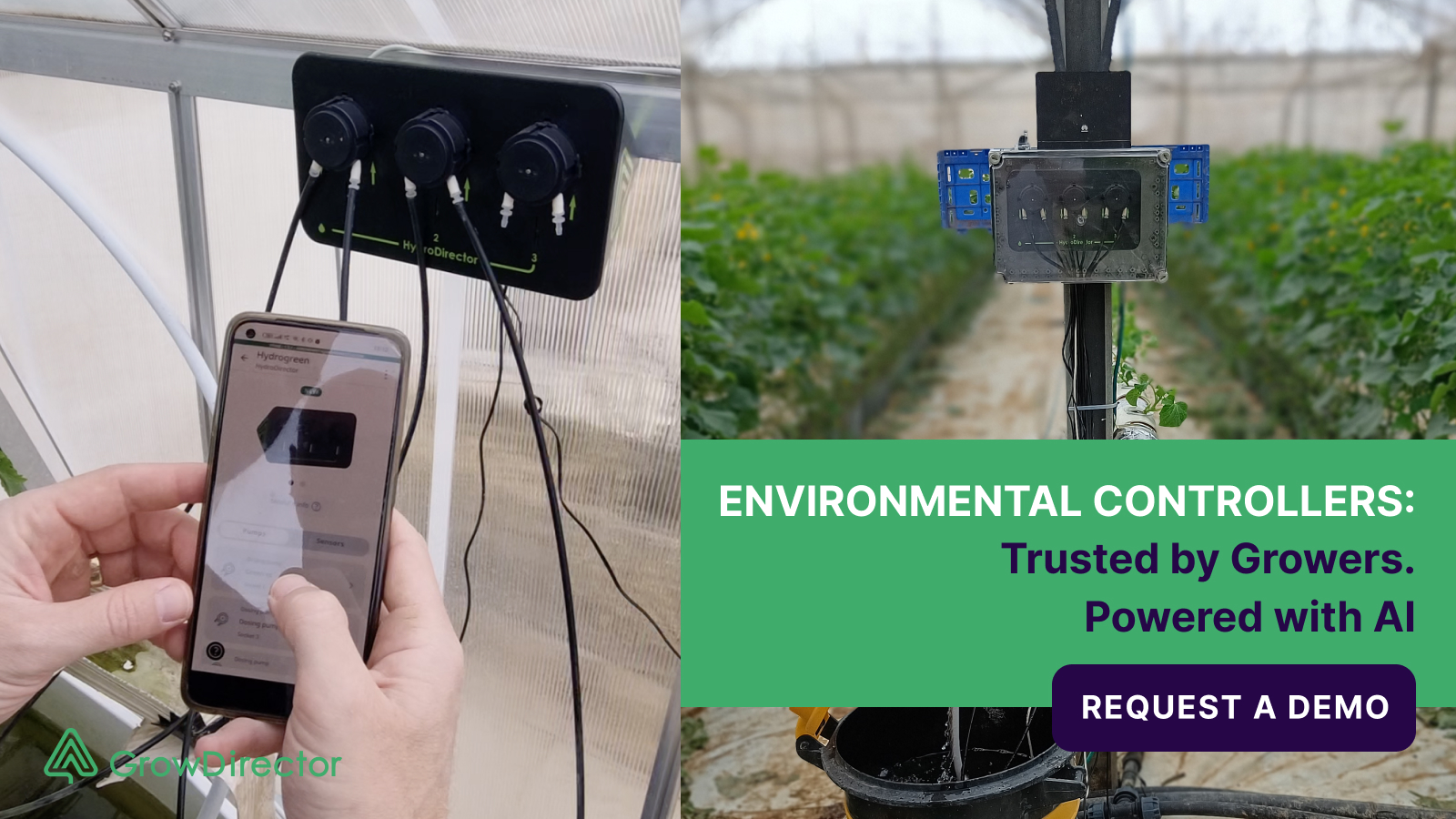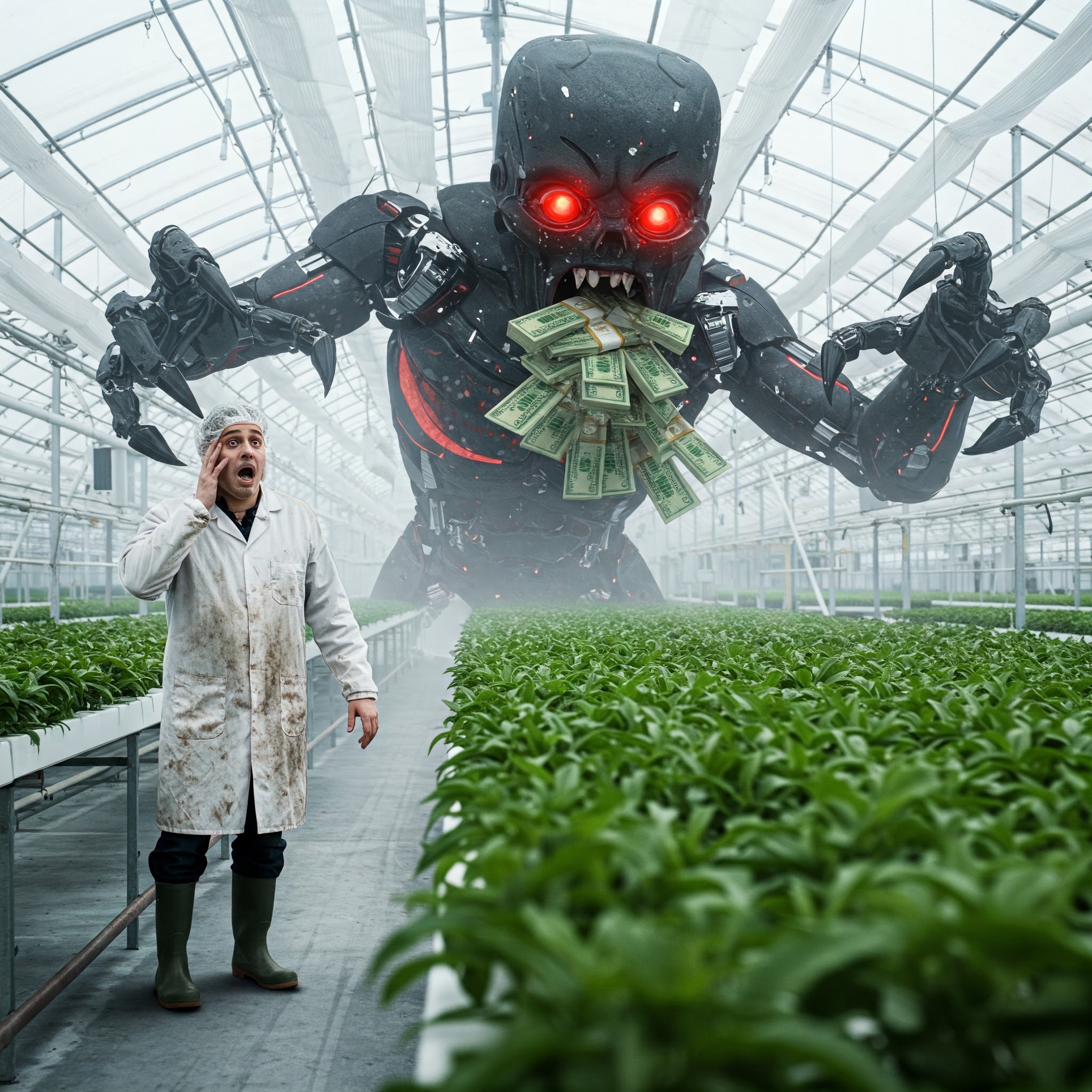
5 Hidden Challenges Greenhouse AI Controllers Don’t Tell Growers
The promise of smart greenhouse technology, powered by sophisticated greenhouse AI and advanced AI controllers, has captivated the US horticulture sector. Visions of optimized crop yields, reduced resource consumption, and streamlined operations are driving the adoption of these innovative systems. Indeed, an AI controller offers compelling solutions for many challenges faced by modern growers. However, beneath the surface of these enticing benefits lie less discussed, yet critical challenges that commercial greenhouse growers must understand to ensure successful and sustainable implementation. This article delves into five key hidden challenges that AI greenhouse controllers often don’t explicitly reveal, providing growers with a realistic perspective for informed decision-making.
Challenge 1: The Hidden Costs Beyond the Price Tag of Your Greenhouse AI
 Understanding the Initial AI Greenhouse Investment: It’s More Than You Think
Understanding the Initial AI Greenhouse Investment: It’s More Than You Think
The initial price tag of an AI controller and associated smart greenhouse systems is often just the tip of the iceberg. While budget planning may focus on the advertised cost of the AI greenhouse technology itself, numerous hidden expenses can significantly inflate the total investment and impact the projected return on investment (ROI). For commercial growers considering automating their operations, understanding these often-overlooked costs is crucial for accurate financial forecasting and preventing budget overruns.
Greenhouse AI Integration: Retrofitting Legacy Systems
One of the first unexpected costs can arise from integrating a smart greenhouse system into existing infrastructure. Many commercial greenhouses in the US, especially those with legacy systems, were not designed for seamless integration with modern greenhouse AI. Retrofitting these facilities to accommodate the necessary sensors, wiring, and network infrastructure can involve substantial unexpected expenses, such as:
- The cost of professional installation.
- Potential upgrades to electrical systems.
- Network infrastructure improvements.
Consider the cost of professional installation, which can be significant and is often not included in the base price of an AI controller.
Data Infrastructure and Ongoing Expenses for Your Smart Greenhouse
Furthermore, the data-driven nature of smart greenhouse operations necessitates a robust and reliable data infrastructure. This translates to ongoing costs for:
- Data storage.
- Cloud service subscriptions to process greenhouse AI algorithms.
- Ensuring a stable network connection throughout the greenhouse facility.
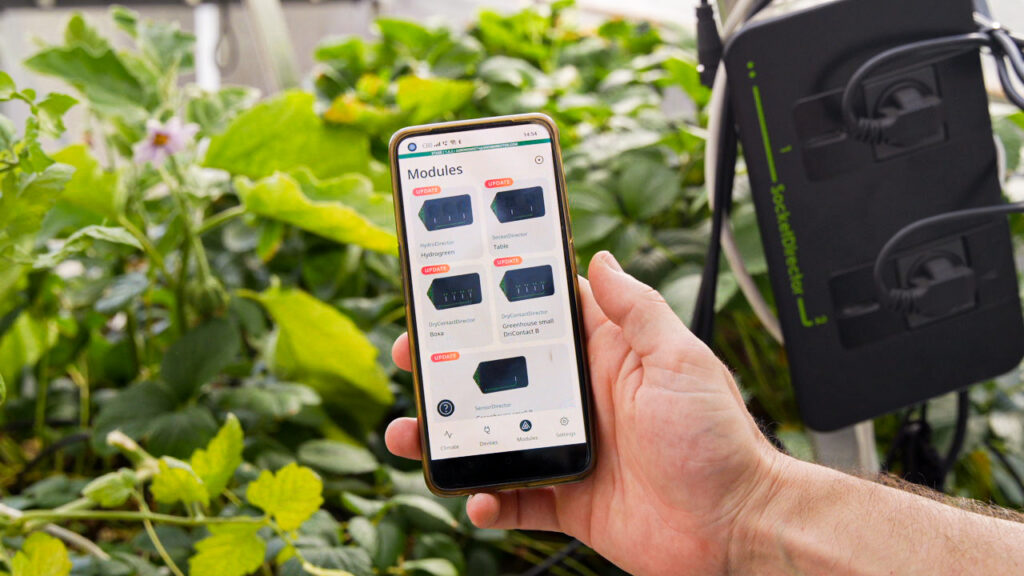
Growers must also factor in the continuous expenses associated with system maintenance and technical support. Like any complex technology, AI controllers require regular updates, potential repairs, and troubleshooting. Service contracts and in-house technical expertise become essential, adding to the operational budget.
Energy Consumption and the AI Controller Footprint
Finally, it’s important to consider the potential increase in energy consumption. While smart greenhouse systems aim to optimize energy use in the long run, the initial deployment of extensive sensor networks and the operation of AI controllers can lead to a temporary rise in energy bills, particularly in larger US greenhouse operations. Therefore, a comprehensive cost analysis for a smart greenhouse should extend far beyond the initial purchase price of the AI controller, encompassing integration, data infrastructure, maintenance, support, and potential energy implications to provide a true picture of the total investment for growers.
GrowDirector’s Transparent Approach: Eliminating Hidden Costs and Empowering Growers
Unlike other AI greenhouse controllers that may lead to unexpected financial burdens, GrowDirector is built on a foundation of transparency and value. We believe in empowering commercial growers with a comprehensive solution that eliminates the hidden costs often associated with smart greenhouse technology. Integration with existing systems is streamlined, minimizing or even negating the need for costly retrofitting. Our software is designed for broad compatibility, and our expert support team provides guidance to ensure a smooth setup. Furthermore, GrowDirector addresses these hidden costs by providing:
- Free software with no licensing fees.
- Free updates to ensure you always have the latest features and security.
- Free support to assist with any questions or issues.

Our commitment to free support means you’ll never face unexpected charges for assistance or troubleshooting. Finally, GrowDirector is engineered for energy efficiency, helping to optimize resource utilization and potentially lowering your overall energy footprint, rather than increasing it. With GrowDirector, the initial investment is clear, and the ongoing costs are minimal, allowing you to focus on what truly matters: cultivating healthy, profitable crops.
Read the real case study where grower doubling his production after integrating our modules into his greenhouse! TAP HERE
Challenge 2: The “Black Box” of AI Controllers and Decision Making in Your Greenhouse AI
Understanding the Opacity of Greenhouse AI Algorithms
A significant concern for many commercial growers considering greenhouse AI is the often opaque nature of AI controller decision-making. Sophisticated AI controllers, especially those leveraging complex machine learning algorithms, can sometimes function as “black boxes.” This means that while they provide recommendations for optimizing greenhouse conditions or crop management, the underlying reasoning and data analysis processes remain largely hidden from the user. For agronomists accustomed to understanding and intuitively adjusting their greenhouse environment based on years of experience, this lack of transparency can be unsettling.
Questioning AI Controller Recommendations: Why is My Smart Greenhouse Doing That?
When an AI controller suggests altering watering schedules, nutrient levels, or temperature settings, growers may naturally question the rationale behind these recommendations. If the greenhouse AI system cannot provide clear, understandable explanations for its decisions, it can erode grower trust and confidence in the technology. This “black box” effect becomes particularly problematic when troubleshooting issues arise in a smart greenhouse. If crops exhibit signs of stress or unexpected growth patterns, growers accustomed to traditional methods might struggle to diagnose the root cause if they cannot decipher the AI controller’s actions and logic. Understanding how the greenhouse AI arrived at its decisions is crucial for effective problem-solving and preventing future issues.
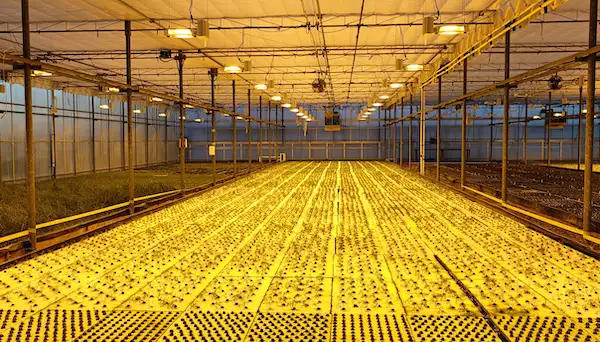
Customization Limits and Grower Expertise in AI Greenhouse Management
Furthermore, the lack of transparency can limit a grower’s ability to customize or fine-tune the AI controller to perfectly match their specific growing practices, crop varieties, or microclimatic nuances within their greenhouse. While some smart greenhouse systems offer user interfaces that display sensor data and historical trends, deeper insights into the greenhouse AI algorithms’ internal workings are often lacking. This can create a barrier for growers who want to actively collaborate with the AI controller and leverage their own expertise in conjunction with the technology. To address this challenge, it’s essential for growers to seek out AI controller solutions that prioritize transparency and explainability, offering user-friendly interfaces that provide insights into the data and logic driving the greenhouse AI’s recommendations. This will foster greater trust, facilitate effective troubleshooting, and empower growers to truly partner with smart greenhouse technology to optimize their operations.
GrowDirector: Illuminating Your Greenhouse with Complete Data Transparency and Control
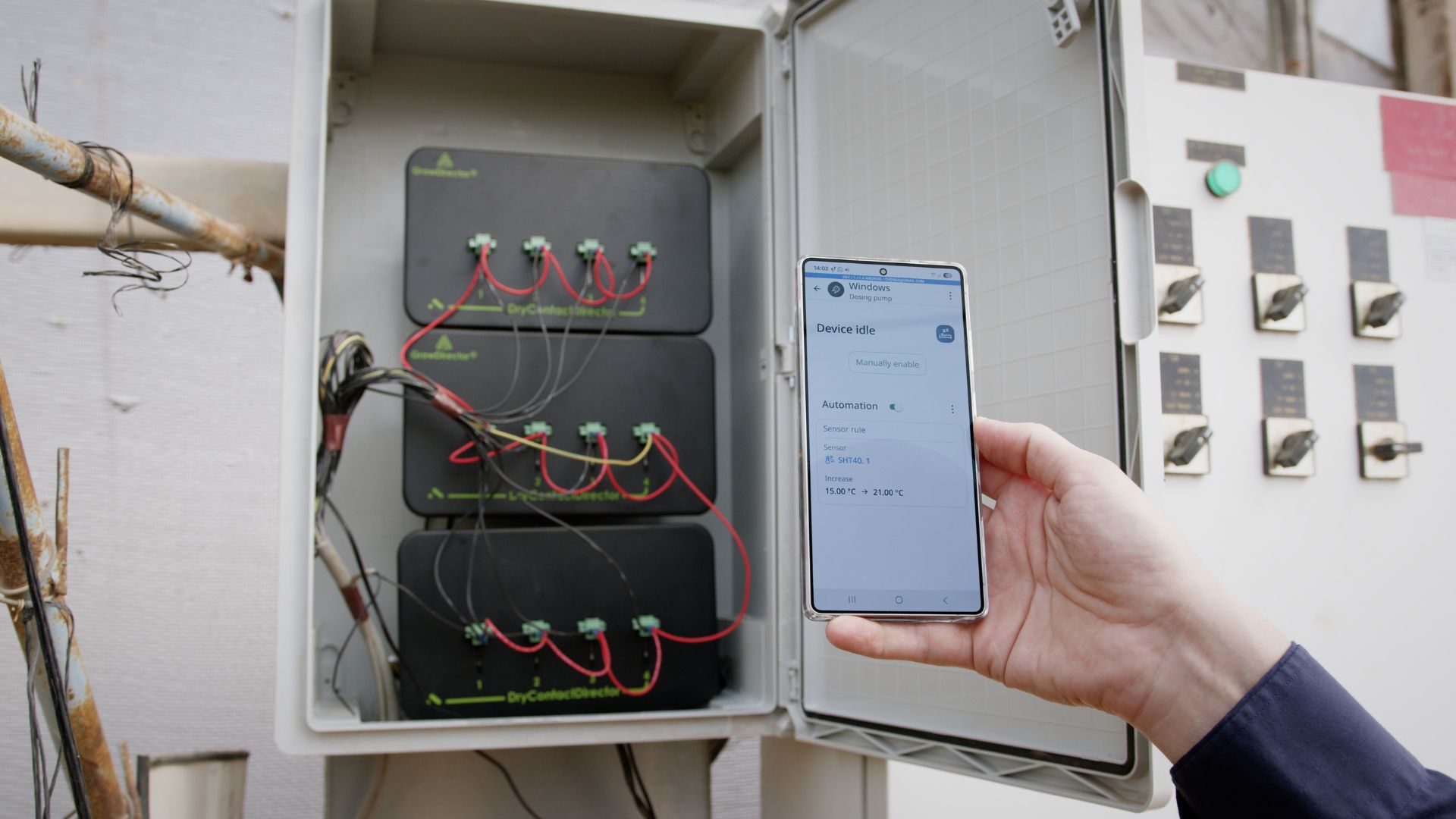
In stark contrast to the “black box” approach of many AI controllers, GrowDirector shines a light on every aspect of your greenhouse environment and the AI’s decision-making processes. We firmly believe that growers should have complete access to and understanding of their data. That’s why our system provides a comprehensive and intuitive interface that offers a clear window into all historical data, accessible remotely from anywhere, at any time. Gone are the days of wondering why the AI made a particular adjustment. GrowDirector empowers you with a full data field, presented in an easily readable format, allowing you to analyze trends, understand the reasoning behind the AI’s recommendations, and fine-tune your strategies based on concrete insights. This transparency fosters trust and enables you to actively collaborate with the AI, leveraging your own expertise alongside the power of data-driven automation. READ REVIEW
Challenge 3: Data Dependency and the Fragility of AI Controller Control in a Smart Greenhouse
The Foundation of Greenhouse AI: Data Quality and Consistency
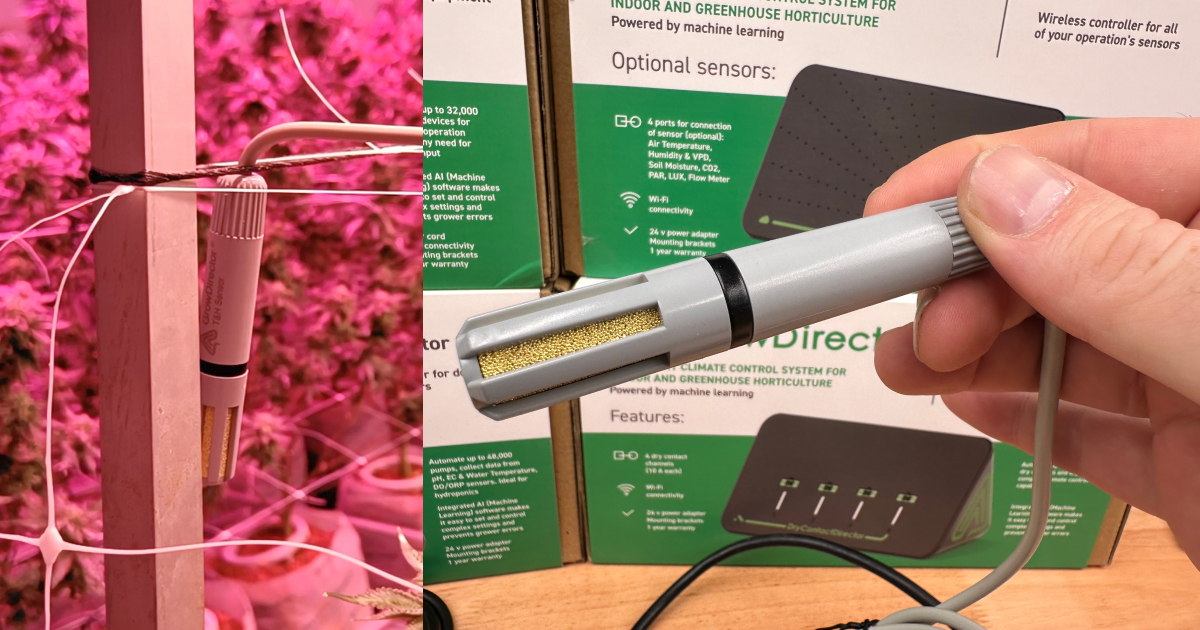 The effectiveness of any AI controller in a smart greenhouse is intrinsically linked to the quality, consistency, and reliability of the data it receives. These sophisticated greenhouse AI systems are data-hungry, relying heavily on a constant stream of accurate information from sensors monitoring various environmental parameters such as temperature, humidity, light levels, CO2 concentration, and soil moisture. However, this data dependency also introduces a potential vulnerability: the fragility of control.
The effectiveness of any AI controller in a smart greenhouse is intrinsically linked to the quality, consistency, and reliability of the data it receives. These sophisticated greenhouse AI systems are data-hungry, relying heavily on a constant stream of accurate information from sensors monitoring various environmental parameters such as temperature, humidity, light levels, CO2 concentration, and soil moisture. However, this data dependency also introduces a potential vulnerability: the fragility of control.
Sensor Reliability and Data Accuracy in Smart Greenhouses
Sensor malfunctions are a common real-world challenge in greenhouse environments. Faulty sensors providing inaccurate temperature or humidity readings, for instance, can mislead the greenhouse AI, causing it to make incorrect adjustments to climate control systems.
Data Loss, Network Stability and Cybersecurity in AI Controller Systems
Similarly, data loss due to technical glitches, power outages, or network disruptions can temporarily blind the AI controller, forcing it to operate on outdated or incomplete information. In the US, where greenhouses can be susceptible to weather-related power fluctuations or network instability, ensuring data integrity is paramount. Furthermore, the increasing connectivity of smart greenhouse systems raises concerns about data security and cybersecurity. Key vulnerabilities include:
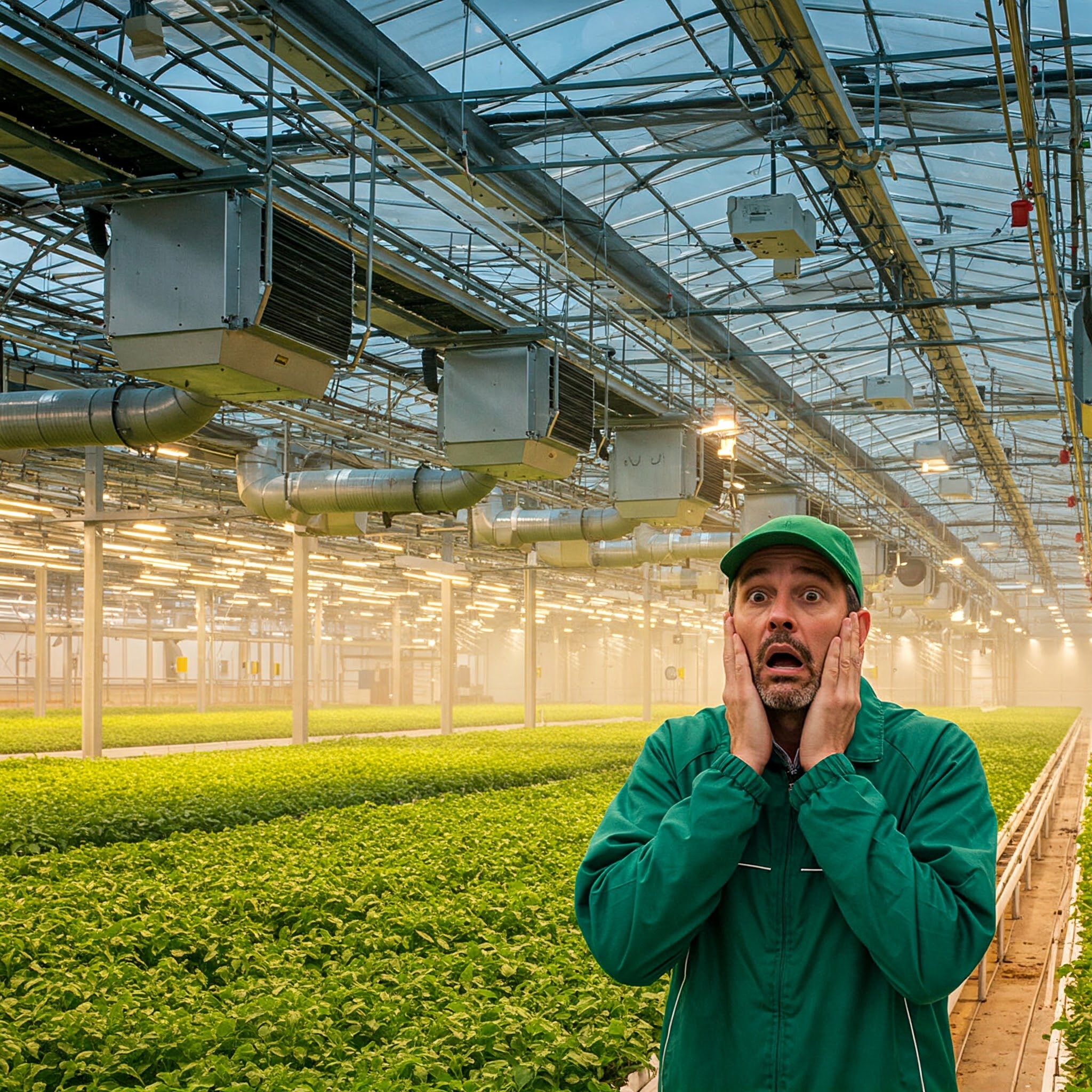
- Data loss due to technical issues or power outages.
- Network instability affecting real-time data flow.
- Cyberattacks compromising sensitive data and control systems.
Imagine a scenario where a cyberattack disrupts the data flow to an AI controller, leading to uncontrolled temperature fluctuations or irrigation malfunctions within a greenhouse. To mitigate these risks, growers implementing AI controllers must prioritize robust data management and system reliability. This includes investing in high-quality, regularly calibrated sensors, implementing redundant data storage and backup systems, ensuring stable and secure network infrastructure, and adopting cybersecurity best practices to protect their smart greenhouse operations. Regular system checks, proactive sensor maintenance, and contingency plans for data disruptions are essential to ensure the continued effectiveness and resilience of greenhouse AI driven control systems.
GrowDirector: Fortifying Your Greenhouse AI Control with Reliable Data and Robust Security
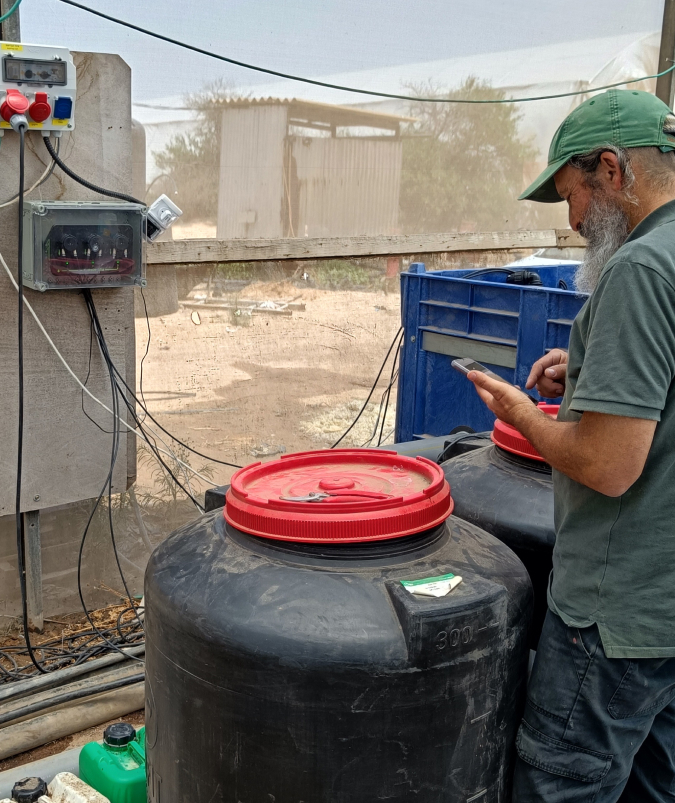 Addressing the critical concerns around data dependency, GrowDirector prioritizes the integrity and security of your greenhouse information. Our cloud-based storage employs the highest security protocols, ensuring your valuable data is protected and readily accessible. We understand the importance of accurate data for effective AI control, which is why GrowDirector utilizes only high-quality, time-tested IoT sensors known for their reliability and precision. GrowDirector ensures data reliability and security through:
Addressing the critical concerns around data dependency, GrowDirector prioritizes the integrity and security of your greenhouse information. Our cloud-based storage employs the highest security protocols, ensuring your valuable data is protected and readily accessible. We understand the importance of accurate data for effective AI control, which is why GrowDirector utilizes only high-quality, time-tested IoT sensors known for their reliability and precision. GrowDirector ensures data reliability and security through:
- Highly secure cloud-based data storage.
- The use of high-quality and time-tested IoT sensors.
- A system that actively monitors sensor health.
- Automatic alerts to growers in case of sensor problems.
Furthermore, our intelligent system actively monitors the health of these sensors. Should a sensor malfunction or provide inconsistent readings, system will immediately recognize the issue and send an alert, enabling you to promptly address the situation and maintain optimal data flow.
Challenge 4: The Deskilling Myth and the Evolving Grower Role in the Age of AI Controllers
AI Greenhouse Automation: Augmenting, Not Replacing Growers
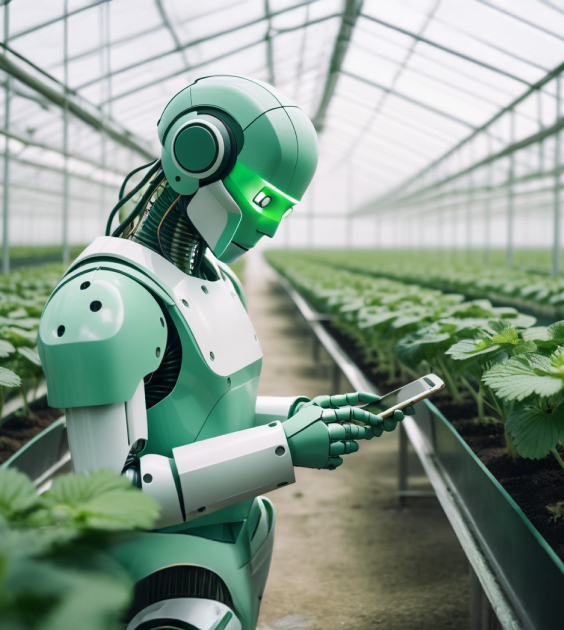 The narrative surrounding AI controllers and smart greenhouse technology often emphasizes automation and labor reduction, sometimes leading to the misconception that greenhouse AI will ultimately deskill or even replace human growers. However, the reality is far more nuanced. While AI controllers can automate many routine tasks and optimize environmental parameters with remarkable precision, they do not eliminate the need for skilled growers. Instead, greenhouse AI fundamentally reshapes the grower’s role, demanding a new set of skills and expertise to effectively manage and oversee these sophisticated systems in US greenhouse operations. The traditional “green thumb,” honed through years of hands-on experience and intuitive understanding of plant needs, remains invaluable. AI controllers are tools to augment, not replace, this expertise.
The narrative surrounding AI controllers and smart greenhouse technology often emphasizes automation and labor reduction, sometimes leading to the misconception that greenhouse AI will ultimately deskill or even replace human growers. However, the reality is far more nuanced. While AI controllers can automate many routine tasks and optimize environmental parameters with remarkable precision, they do not eliminate the need for skilled growers. Instead, greenhouse AI fundamentally reshapes the grower’s role, demanding a new set of skills and expertise to effectively manage and oversee these sophisticated systems in US greenhouse operations. The traditional “green thumb,” honed through years of hands-on experience and intuitive understanding of plant needs, remains invaluable. AI controllers are tools to augment, not replace, this expertise.
New Skillsets for Growers in Smart Greenhouse Management
Growers transitioning to smart greenhouse systems will need to develop new technical proficiencies. This includes the ability to interpret data visualizations and reports generated by the AI controller, monitor system performance, diagnose technical issues, and potentially adjust system parameters based on their own observations and insights. Basic troubleshooting skills for software and sensor networks become increasingly important.
Maintaining Grower Expertise and Avoiding Over-Reliance on Greenhouse AI
There’s a risk of over-reliance on greenhouse AI, potentially leading to a decline in traditional horticultural skills over time if growers become too detached from direct plant observation and hands-on management. Maintaining a balance between leveraging the power of AI controllers and preserving core grower knowledge is crucial for long-term success.
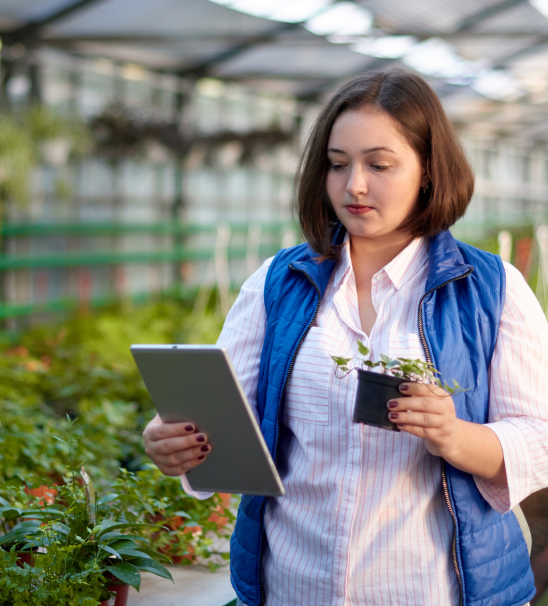
Adequate training and ongoing support are also essential. Training programs should focus not only on the technical aspects of operating AI controllers but also on how to interpret greenhouse AI insights, integrate them with existing growing practices, and troubleshoot common system issues.
The evolving role of the grower in a smart greenhouse environment may also necessitate adjustments to job descriptions and team structures within US horticultural businesses. New roles focused on data analysis, system management, and technical support may emerge, requiring a shift in workforce skillsets and potentially attracting a new generation of tech-savvy individuals to the greenhouse industry. Ultimately, the successful integration of AI controllers in greenhouses hinges on recognizing that greenhouse AI is not a replacement for grower expertise but rather a powerful tool that, when wielded effectively by skilled and adaptable growers, can unlock unprecedented levels of efficiency and productivity.
Challenge 5: The Pitfalls of Unrealistic ROI Expectations in Greenhouse AI
Realistic Expectations for Smart Greenhouse ROI: Beyond the Marketing Hype
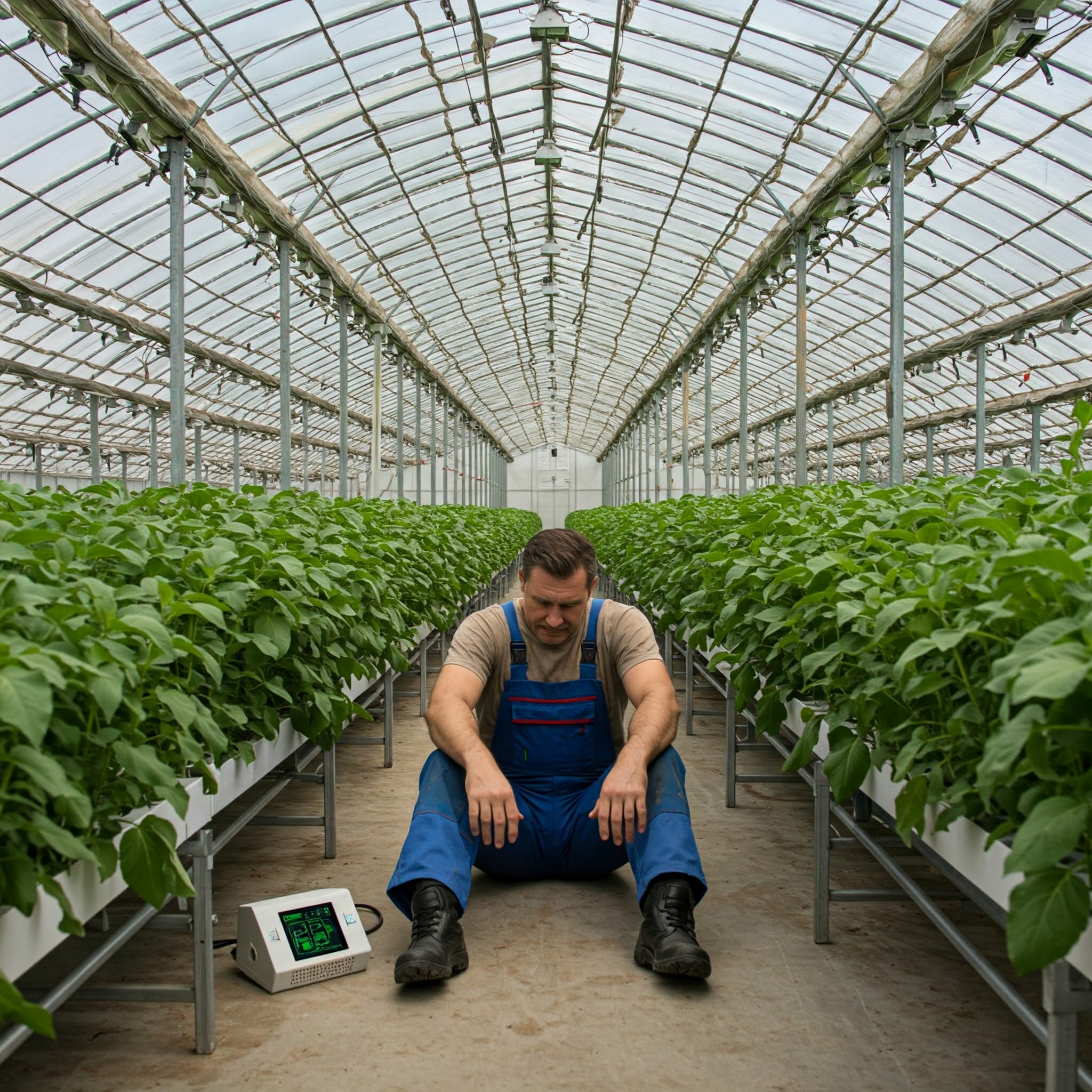 The marketing surrounding AI controllers and smart greenhouse technologies often paints a compelling picture of rapid and substantial return on investment (ROI). Promises of significant yield increases, drastic reductions in resource consumption, and streamlined operational costs are common. However, US growers considering adopting greenhouse AI must approach these claims with a degree of realism and conduct thorough due diligence to understand the factors that truly influence ROI in real-world commercial greenhouse settings. While AI controllers undoubtedly hold immense potential to improve efficiency and productivity, achieving the hyped ROI is not always guaranteed and can be influenced by a variety of factors, some of which are often “hidden” beneath the surface. One key challenge is managing unrealistic expectations.
The marketing surrounding AI controllers and smart greenhouse technologies often paints a compelling picture of rapid and substantial return on investment (ROI). Promises of significant yield increases, drastic reductions in resource consumption, and streamlined operational costs are common. However, US growers considering adopting greenhouse AI must approach these claims with a degree of realism and conduct thorough due diligence to understand the factors that truly influence ROI in real-world commercial greenhouse settings. While AI controllers undoubtedly hold immense potential to improve efficiency and productivity, achieving the hyped ROI is not always guaranteed and can be influenced by a variety of factors, some of which are often “hidden” beneath the surface. One key challenge is managing unrealistic expectations.
Understanding Payback Periods and Factors Influencing Greenhouse AI Profitability
Marketing materials may present best-case scenarios or results from highly controlled research environments, which may not directly translate to the diverse and dynamic conditions of a typical US commercial greenhouse. Growers need to critically evaluate ROI projections and understand the underlying assumptions and limitations. Payback periods for smart greenhouse investments can sometimes be longer than initially anticipated. Factors influencing the actual ROI of greenhouse AI include:
- Integration costs with existing infrastructure.
- The learning curve for adopting new technologies.
- Unexpected operational challenges.
- The specific type of greenhouse structure.
- The crops being grown.
- The local climate.
- Existing infrastructure limitations.
- The grower’s management practices.
A one-size-fits-all approach to AI controllers is unlikely to deliver consistent ROI across all scenarios.
Validating ROI and Making Informed Decisions on Greenhouse AI Controllers
Finally, the lack of standardized metrics for measuring and comparing the performance and ROI of different smart greenhouse systems can make it challenging for growers to make informed purchasing decisions. Industry-wide benchmarks and transparent performance data are needed to facilitate accurate ROI assessments. To navigate this challenge, commercial growers should prioritize careful ROI analysis, seeking detailed information from AI controller vendors about real-world case studies and performance data relevant to their specific greenhouse type and crops. Pilot projects and phased implementation can help to validate ROI projections in their own operations before committing to full-scale smart greenhouse adoption. Setting realistic expectations, conducting thorough due diligence, and focusing on practical payback are essential steps for growers to successfully leverage the benefits of AI controllers and achieve a positive ROI from their smart greenhouse investments.
GrowDirector: Delivering Tangible ROI and Flexible Scalability for Real-World Growers
Unlike the often-hyped and sometimes elusive ROI promised by other AI controllers, GrowDirector focuses on delivering clear and demonstrable results. Our users have experienced significant improvements, with some case studies showing almost doubling of crop production. [Insert Link to Case Study Here]. We believe in providing a solution that not only promises but also proves its value. Our solution offers competitive pricing, making advanced AI control accessible to a wider range of commercial growers. GrowDirector provides a clear path to ROI through:
- Competitive pricing.
- Scalable system allowing for phased implementation.
- Modular design enabling purchase and integration of components separately.
- Demonstrated cases of significant crop production increases.
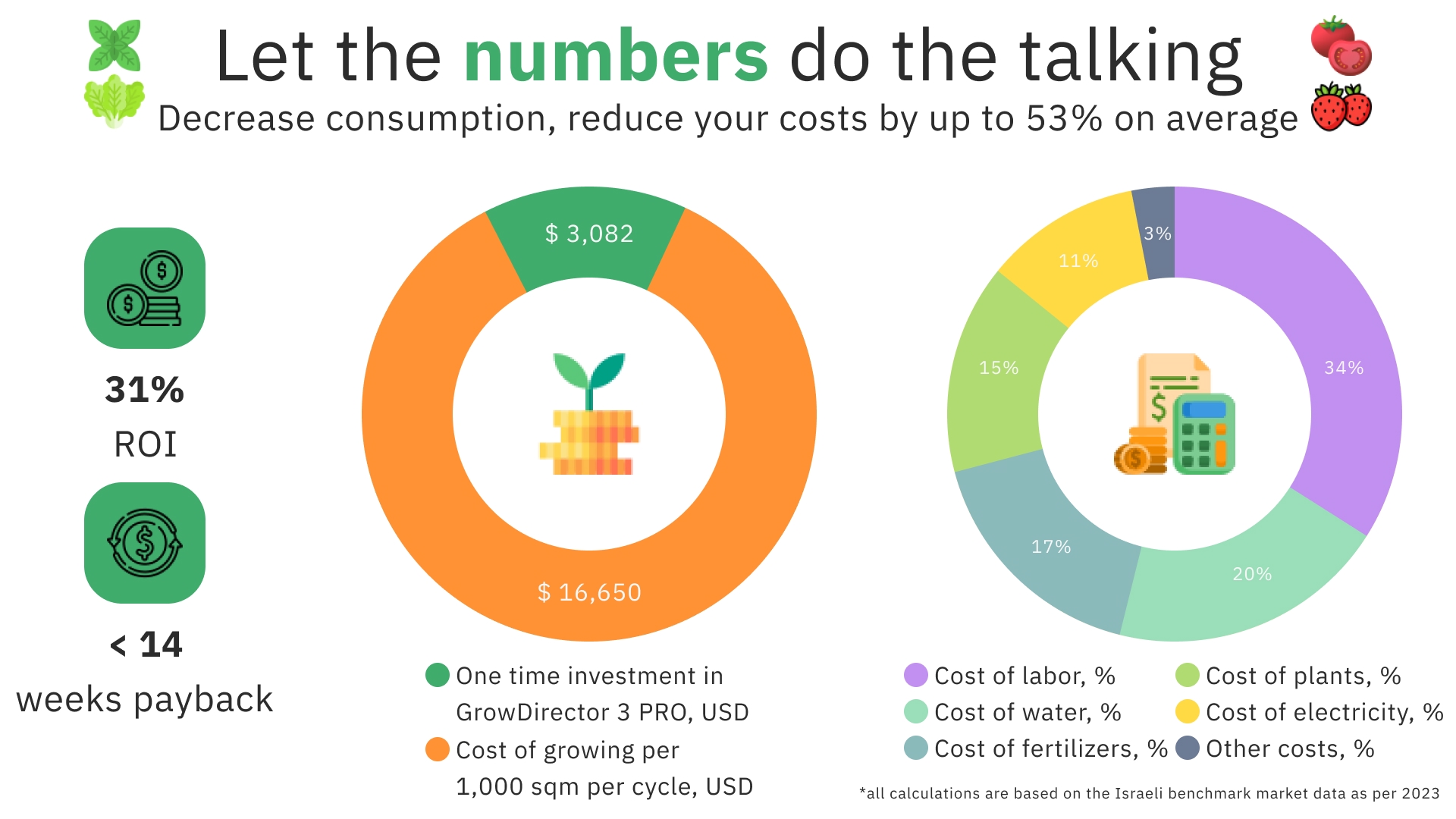
Understanding that every greenhouse operation has unique needs and budgets, our system is designed for scalability. You don’t need to make a massive upfront investment; GrowDirector allows you to start with the core components and easily integrate additional modules and sensors as your operation grows and your needs evolve. This modular approach ensures a flexible and cost-effective pathway to smart greenhouse automation, maximizing your return on investment at your own pace.
Embracing AI Controllers with Realistic Expectations in US Horticulture: The GrowDirector Advantage
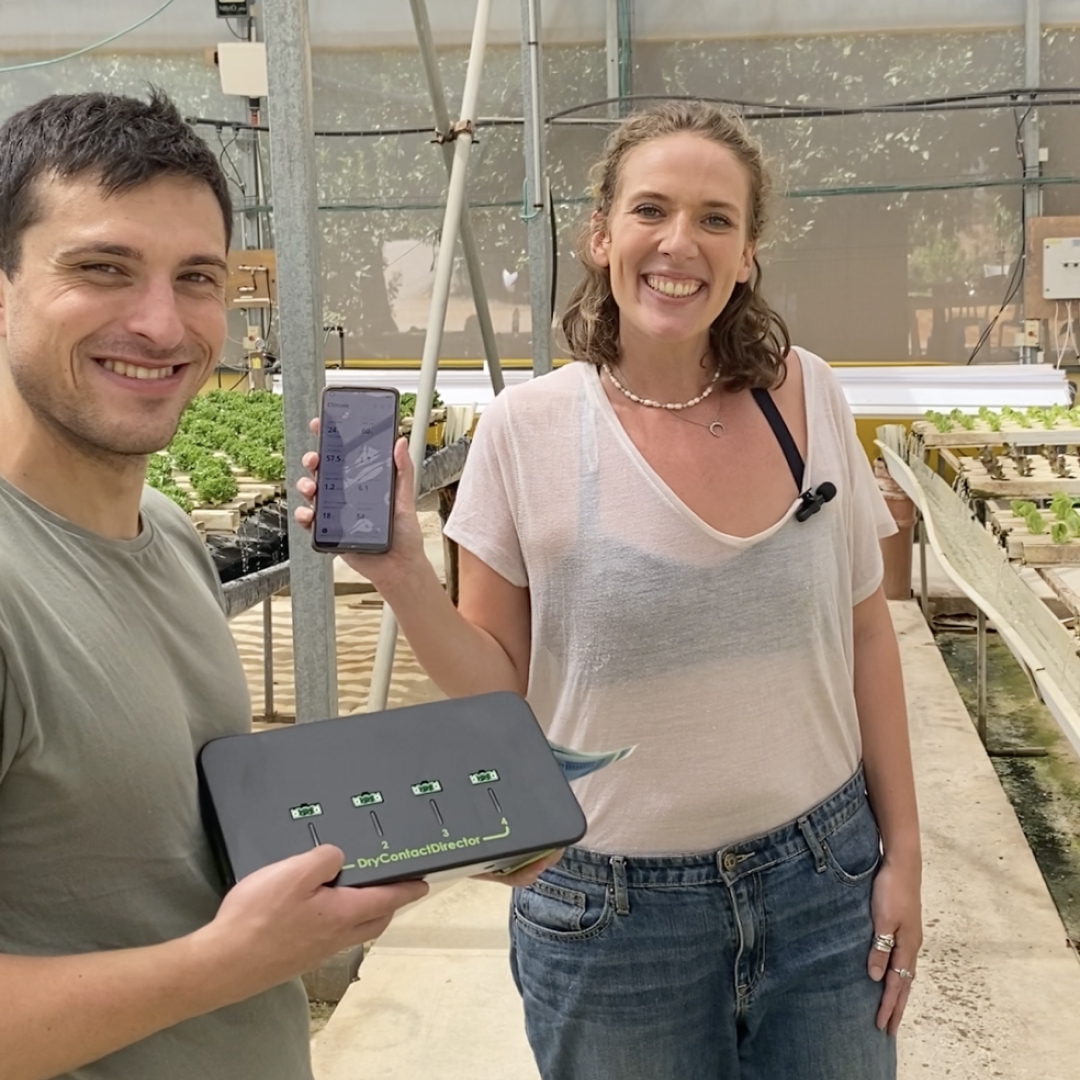 AI controllers and smart greenhouse technologies are indeed a transformative force in US horticulture, offering the potential to revolutionize crop production and resource management. However, as this article has highlighted, realizing the full benefits of greenhouse AI requires a clear-eyed understanding of the hidden challenges that extend beyond initial marketing promises. US growers considering adopting AI controllers should proactively address concerns related to hidden costs, the “black box” nature of AI decision-making, data dependency vulnerabilities, the evolving grower role, and realistic ROI expectations. By asking critical questions, conducting thorough due diligence, and seeking transparent, user-friendly solutions like GrowDirector, horticultural businesses can navigate these challenges effectively.
AI controllers and smart greenhouse technologies are indeed a transformative force in US horticulture, offering the potential to revolutionize crop production and resource management. However, as this article has highlighted, realizing the full benefits of greenhouse AI requires a clear-eyed understanding of the hidden challenges that extend beyond initial marketing promises. US growers considering adopting AI controllers should proactively address concerns related to hidden costs, the “black box” nature of AI decision-making, data dependency vulnerabilities, the evolving grower role, and realistic ROI expectations. By asking critical questions, conducting thorough due diligence, and seeking transparent, user-friendly solutions like GrowDirector, horticultural businesses can navigate these challenges effectively.
GrowDirector stands out by offering free software, updates, and support, eliminating hidden costs and ensuring a clear investment. Its transparent interface provides growers with full data access and control, moving away from the “black box” of opaque algorithms. With secure cloud storage and reliable sensors that alert users to potential issues, system addresses data dependency concerns. Furthermore, it empowers growers in the age of AI by providing tools and support that augment their expertise rather than deskilling them. Its scalability and competitive pricing make advanced AI accessible to a wider range of growers, delivering tangible ROI as demonstrated by real-world case studies.
The future of greenhouse horticulture in the US is undoubtedly intertwined with greenhouse AI, and solutions like GrowDirector, which prioritize transparency, grower empowerment, and realistic expectations, will pave the way for a more efficient, sustainable, and profitable future for the industry.
